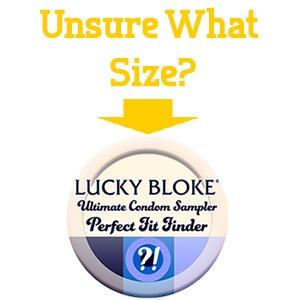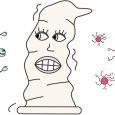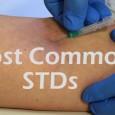Nonoxynol-9 is primarily considered a surfactant and has been included in a large number of cosmetic products, as well as cleaning agents, in the past.
Nonoxynol-9 also called N-9 in some cases, is also known to act as a spermicide, which is why this is also one of the most commonly used ingredients in spermicide products that are currently available on the market.
Spermicide refers to a series of contraceptive substances that are inserted into the vagina in order to prevent pregnancy during sexual intercourse.
Disclaimer: condom-sizes.org is supported by its readers. When you buy through links on our site, we may earn an affiliate commission. Learn more.
In many cases, contraceptive procedures that involve the use of spermicide containing N-9 is generally considered safe and somewhat effective. N-9 has now been used as a spermicide agent for over three decades and is still a common option that people resort to when they are looking for a contraceptive option [1].
Even though commonly used and considered a generally safe option in terms of its spermicidal properties, there are certain dangers and risks that have been associated with the use of a spermicide product that contains the active ingredient nonoxynol-9.
The Effect Of Nonoxynol-9 On STDs
The World Health Organization reports [2] that nonoxynol-9 were shown in laboratory tests between the 70s and 80s to inactivate the specific microorganisms that were behind infections like HIV, chlamydial infections, and gonorrhea.
Since this time, spermicides containing nonoxynol-9 were relied on as a way to not only help to prevent pregnancy but also to assist in the prevention of spreading these infections.
Unfortunately, no scientific evidence from human studies has been presented to provide proof of the possible protective effects that these spermicides may have in the prevention of HIV and other sexually transmitted diseases.
In modern times, however, scientific studies have actually shown the opposite to be true. With recent studies, it seems like the laboratory tests might have been inappropriate and further studies should have been done on human subjects.
Newer evidence on the subject has now suggested that spermicides with the active ingredient nonoxynol-9 do not effectively protect against the transmission of HIV infections.
Contrary to what was believed a few decades ago, the World Health Organization also reported that new studies have suggested the risk of transmitting an HIV infection to a person who does not have the infection may be higher when nonoxynol-9 is used frequently as a vaginal spermicide.
There are various studies that have already looked at whether or not the use of spermicide with nonoxynol-9 can actually protect against HIV.
In one study [3], led by the University of South Australia’s Division of Health Sciences, scientists, analyzed five different studies that were previously conducted in order to gain a more accurate perspective on the relation between the incidence of HIV infections and the use of nonoxynol-9 spermicide products.
They found that there is no significance statistically significance when comparing the results of people who used these spermicide products to those who did not utilize a nonoxynol-9 spermicide substance.
With this in mind, a conclusion was made that spermicide with the active ingredient nonoxynol-9 does not seem to be an effective protective or preventative strategy to protect women against infection when they have sexual intercourse with a man that is HIV positive.
The scientists made another important discovery while they were analyzing the results obtained from the five previous studies that were all included in their paper. They found that the incidence of genital lesions seems to be much higher amongst women who use nonoxynol-9 spermicide, compared to those who do not use this type of spermicide.
The conclusion here is that this type of spermicide may do more harm than good. While it may be somewhat effective as a contraceptive, women should not rely on nonoxynol-9 as a way to prevent themselves from being infected with the HIV virus. Additionally, women should also be aware of the risks that they are exposed to should they choose to use this type of spermicide.
It should also be noted that the development of genital lesions may increase a woman’s risk of becoming infected with HIV even further. It is not only HIV that is of concern here.
According to a paper published by the BU School of Medicine [4], the risk of HIV and other types of sexually transmitted infections, can be greatly increased when a woman experiences warts and lesions in their genital area – especially when the woman participates in sexual intercourse with a man that is infected, without first undergoing appropriate treatment for the lesions.
Other Possible Dangers Of Nonoxynol-9
Apart from nonoxynol-9 not playing a role in the prevention of STDs that the substance was originally thought to be playing, there are some other risks that need to be noted in terms of using this particular substance as a way of contraception.
In one study [5], scientists found that while there was a minimal disruption in the flora of the vagina among patients who utilized standard and infrequent doses of spermicide substances containing nonoxynol-9, dose-dependent effects were noted, however.
In particular, it was found that the prevalence of certain bacterial microorganisms increased as the dose of nonoxynol-9 spermicide were increased.
The specific microorganisms that were found to increase in numbers included those that are associated with bacterial vaginosis. Thus, the study concluded that with frequent use of these spermicide substances, and with higher doses, a higher risk of bacterial vaginosis might be a factor to be taken into consideration.
In addition to these risks, women should also be aware of the fact that spermicide fails to be an effective contraceptive strategy approximately 28% of the time, which means pregnancy is still possible with the use of this method [6].
Conclusion
The use of spermicide products that contain nonoxynol-9 as an active ingredient is very common in the general population. While considered relatively effective, there are possible risks that people are advised to become aware of when it comes to using this type of vaginal contraceptive substance.
In particular, scientists have discovered that the risk of STDs may be increased with nonoxynol-9, contrary to popular belief that this substance reduces the risk. Further risks have also been discovered, as discussed in this post.
References:
- V. Iyer, S.S. Poddar. Update on nonoxynol-9 as a vaginal spermicide. The European Journal of Contraception & Reproductive Health Care. Dec 2008. [link]
- Nonoxynol-9 ineffective in preventing HIV infection. World Health Organization. [link]
- D. Wilkinson, G. Ramjee, M. Tholandi, G. Rutherford. Nonoxynol-9 for preventing vaginal acquisition of HIV infection by women from men. The Cochrane Database of Systematic Reviews. 2002. https://www.ncbi.nlm.nih.gov/pubmed/12519622
- Untreated Genital Warts May Increase Risk of HIV Transmission. BU School of Medicine. 21 Aug 2018. [link]
- x C.A. Schreiber, L.A. Meyn, M.D. Creinin, K.T. Barnhart, S.L. Hillier. Effects of Long-Term Use of Nonoxynol-9 on Vaginal Flora. HHS Public Access. 23 Feb 2006. [link]
- Spermicide: Effectiveness, Side Effects And Risks. American Pregnancy Association. 2 Sep 2016. [url]






 Dr. Ahmed Zayed has a Bachelor's Degree in Medicine and Surgery. He has 8 years of experience in his field and obtained his MBBS after he graduated from the University of Alexandria in Egypt.
Dr. Ahmed Zayed has a Bachelor's Degree in Medicine and Surgery. He has 8 years of experience in his field and obtained his MBBS after he graduated from the University of Alexandria in Egypt.
Dear Disappointed,
If you were to properly source your research to supposedly fact check this article, you will find the same information available on the CDC website.
You are right on one point however; spermicide does not kill sperm such as the suffix implies and most people assume.
Good day.